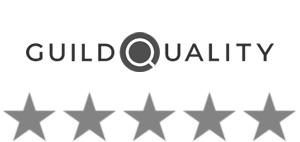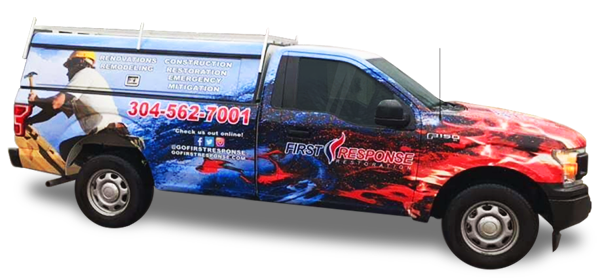After a fire ends, the trouble is far from done. Smoke and fire damage are like silent threats left behind. They affect homes and businesses different, marking them with either dark stains or fiery scars. The cleanup for smoke and fire damage varies greatly. Smoke leaves a hidden but far-reaching mark, needing special care to remove. Fire, on the other hand, physically changes everything it touches. The process of fixing either damage requires different approaches.
Smoke damage is mysterious and sneaky. It reaches deep into fabrics and other materials, leaving behind discoloration and smells. Fire damage, however, is fierce. It crisps and melts materials, leaving charred ruins. Restoration experts know the right steps to repair each type of damage. They use specialized methods to deal with both smoke and fire damage effectively.
Key Takeaways
- Smoke damage stems from acidic soot and residues, causing discoloration, corrosion, and odors.
- Fire damage results from direct flame contact, potentially leading to structural collapse.
- Thorough cleaning and odor elimination are central to smoke damage restoration.
- Fire damage restoration often requires construction and structural repairs.
- Specialized cleaning techniques and proper ventilation are crucial for both smoke and fire damage.
Understanding Smoke Damage: Unseen but Destructive
Smoke damage can be hard to see right away, but it’s very destructive. It comes in types of smoke damage like wet smoke, dry smoke, protein smoke, and fuel smoke. Each type needs special ways to clean it up without causing more damage.
- Wet Smoke: It comes from smoldering fires. This smoke is sticky and leaves a hard-to-remove residue. It also smells really bad.
- Dry Smoke: This type comes from high-heat fires. It leaves behind a fine, powdery residue. It can get into tiny spots and is hard to clean.
- Protein Smoke: It happens a lot in kitchen fires. It leaves a greasy residue that’s hard to see but can damage finishes and paint.
- Fuel Smoke: This type is from fires in garages or near flammable liquids. It leaves behind a thick, sticky residue that’s difficult to clean off.
It’s key to tackle smoke discoloration and soot damage quickly and with skill. If left unchecked, these can permanently damage your property. Smoke is acidic and worsens the longer it sits. This makes smoke restoration crucial right away.
Invisible fire damage is a real threat. It can weaken buildings and harm health without warning. But, experts can find and fix these hidden problems. They use special methods to clean the air and keep materials strong.
Learning about smoke damage’s many forms helps property owners act fast. This reduces losses and keeps the place safe and clean. The quick, expert response is key to avoid lasting harm from smoke.
The Impact of Smoke versus Fire Damage
It’s vital to know the differences between smoke versus fire damage for good property restoration. Both kinds of damage bring their own issues and need special care to fix them.
Smoke damage is often hard to spot but spreads easily, even to places not charred by fire. It affects things like curtains and carpets with stains and smell. Soot is acidic and ruins plastics and electronics fast. The fire’s immediate urgency and the response of combustible materials mean professionals must act quickly to prevent big damage.
- Smoke damage often reaches areas untouched by flames, resulting in discoloration and persistent odors.
- Rapid intervention is needed to address the acidic effects of soot, especially on plastics and electrical components.
On the flipside, fire damage is obvious and fast, burning down structures and melting things. How bad it gets depends on the flame’s power, needing anything from simple fixes to total rebuilds. The visible destruction calls for strong property restoration efforts that meet the fire’s unique challenges.
- Direct impact from the fire leads to visible signs of damage requiring varying levels of restoration.
- Detailed assessments are vital to accurately process insurance claims and plan restoration steps effectively.
It’s crucial to tell smoke and fire damage apart. This helps choose the right ways to restore a property and make it safe and sound again.
The Visible Scars of Fire Damage
Once a fire happens, we see structural fire damage and material damage right away. Items and parts of the building show clear signs of harm. The high temperatures can burn furniture and personal items. It can even make buildings weak, which could be dangerous.
Fire’s physical damage reaches far and wide, not just on the surface. It affects features inside and outside, like support beams and roofs. These usually get weaker, needing lots of checks and work to get back to normal.
- Structural integrity weakened by extreme heat.
- Damage seen on walls, ceilings, and outside.
- Common items like furniture are lost.
- Big restoration efforts needed to fix fire damage.
It’s key to know how much a fire has ruined something. This helps in picking the best way to fix it. Often, many parts of a place must be rebuilt. This makes sure a home is safe again after dealing with structural fire damage.
A Deep Dive into Restoration: Processes for Smoke and Fire Damage
The restoration process for smoke and fire damage is thorough. It’s a team effort between restoration professionals and property owners. It involves dealing with what you can see and what you can’t, like smells and hidden dirt.
First off, making sure the damaged area is safe is key. Methods like boarding up and putting on tarps keep out more damage. Then, pulling out the water used to put out the fire is a must-do. Doing this fast stops more harm, like extra water damage.
- Soot Removal: IICRC-certified technicians carefully clean soot off every surface. This step is critical for the repair process.
- Smoke Odor Elimination: They use special tools to get rid of smoke smells. This makes the place not just clean but also smell-free.
Once the first steps are done, the focus turns to fixing the building. This step is key. It means fixing or building back parts of the place that got hurt. It makes sure the structure is strong and looks good again.
- Sanitization: Before people can go back in, the whole place has to be deeply cleaned. This makes it safe and healthy again.
- Final Checks: Finally, the pros check everything to make sure it’s right. They ensure the place is both safe and top-quality.
Every part of the process, from cleaning up soot to fixing the structure, is done carefully. This shows why having IICRC-certified technicians and skilled restoration professionals is so important. Their know-how ensures the work is done well. This guarantees your place can go back to its pre-damage condition safely.
Preventative Measures to Reduce Risk of Damage
Effective fire prevention means knowing and solving the leading causes of house fires. We can significantly lower the risk of fires and damage. This is by putting in place important safety rules and making people aware.
Having smoke alarms is key for spotting fires early, giving everyone time to get out safely. It’s crucial to check and keep these alarms working well. Also, you should place fire extinguishers in easy-to-reach spots, like in kitchens and garages. This way, you can act fast if a fire starts.
- Encourage people to smoke away from things that can catch fire.
- Include carbon monoxide alarms. They can warn you of a dangerous, unseen gas from fires.
- Check your electrical system regularly for any issues. Faulty wires are a big cause of fires.
By using these tips and the latest tech for safety, homeowners and businesses can protect their places from fire damage.
Conclusion
Spotting the differences between smoke and fire harm is key. It helps restoration teams offer the best services. This boosts the odds for complete recovery post-fire. Workers face tough choices with smoke and fire damage, each has its own problems. Smoke damage brings health risks while fire ruins everything. Getting pros to clean up is crucial for safety and to fix the building’s structure.
After a fire, a detailed game plan is a must. Teams check the area for safety, use the latest methods to clear harmful stuff, and follow top rules. This careful work means places not only seem like they did before but are also safe to live in. Having pros handle this is vital for a successful recovery.
Preventing damage is key before a fire. But if that fails, knowing about smoke and fire harm helps manage the outcome. With this knowledge, owners can team up with insurance and repair experts for a quick and good outcome. This shows how strong people can be in face of disasters, ready to bounce back and start anew.

















